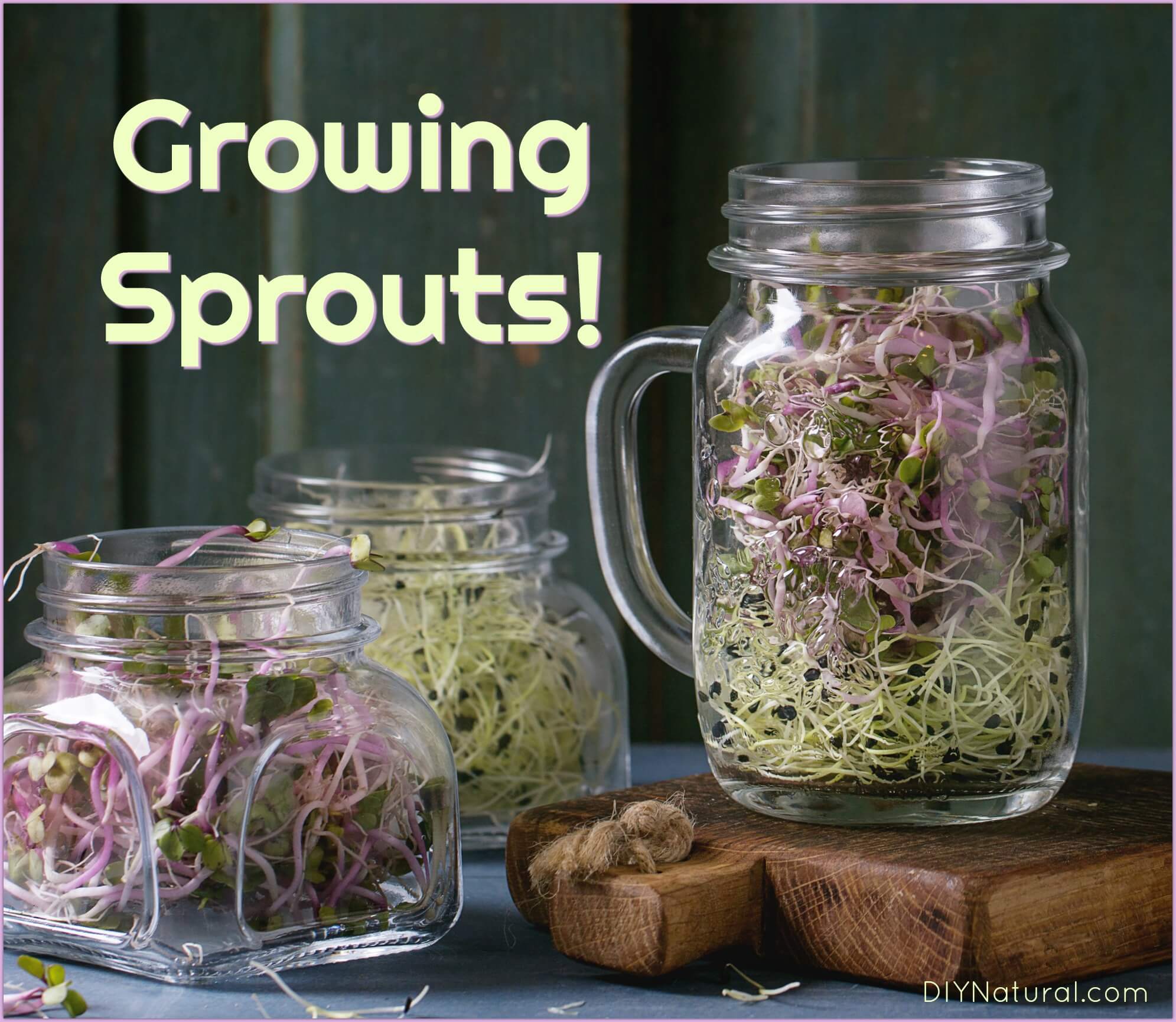
Last week we explored quenching spring fever by growing microgreens. Today let’s look into why eating and growing sprouts is a great idea!
By now, many of us are finally able to begin planting our seeds in trays. I’m waiting eagerly to see the first signs of the plants that will give me homegrown garden veggies all season long.
Just before I planted my seeds I began to grow microgreens, but that doesn’t mean that the rest of my winter was without fresh greens. Long before I break out my soil and seeding pans, my favorite way to get fresh homegrown veggies is growing sprouts in a glass mason jar.
Difference Between Growing Sprouts and Microgreens
Growing Microgreens
You grow microgreens in soil and you only eat the leaves and tender stems. Also, you leave the roots behind in the soil. Because they have lost the ability to photosynthesize, these roots will die rather than put up a new plant.
Growing Sprouts
You grow sprouts without the use of soil. You simply rinse and leave them to sprout without any growing medium. When you eat a sprout, you eat everything – root to leaves.
Depending on your use for the sprout, you may not allow the seed to develop enough to make leaves. For instance, I sprout my wheat and spelt grains and then dry them for later use. If I allowed the leaves to develop it would be really difficult to grind. In this case, I only allow the grain to produce the tiniest of shoots before I use or dehydrate it.
Beans may or may not develop leaves before you consume them, but other seeds like sunflower or peas usually get to the green growth stage before getting to your supermarket.
Growing Sprouts
The process for sprouting is remarkably simple, and you can get started with very little equipment.
Equipment
The equipment required for growing sprouts is minimal. All you really need is a mason jar, though it can be very useful to have a round screen to cover the top. A screen makes rinsing your seeds (which you need to do several times a day) much easier.
Soak (only done once)
To start your sprouts, cover your seeds in filtered water and let them sit. The amount of time required for this step varies by seed. The norm is 8-12 hours, but check each seed’s information page for the specific soak times. Remove any floating seeds, as they are either bad or not seeds at all.
Rinse (several times)
Use cool water and rinse 2-3 times each day.
Drain and dry (several times)
After each rinse, drain the seeds thoroughly and set them back in their resting position to dry.
Repeat this rinsing/draining/drying process until your sprouts are grown to your liking.
Reasons I Like Growing Sprouts
There are many reasons to learn how to grow sprouts.
Sprouting makes grains and nuts more digestible, and you can use seeds with sprouts moist or dry for later baking projects.
I like to sprout beans for a fresh supply of green in the winter months.
Seeds You Can Sprout
The list of seeds you can sprout is as long as any list of seeds you have available.
The most commonly sprouted bean is the mung bean. It provides a thick, tender white stalk that makes a nice addition to your favorite stir-fry, salads, sandwiches, and soups.
You may decide to experiment with seeds you’ve never seen in the store.
Sprouting tips to make your experience a good one:
- Choose seeds that have not been treated with an insecticide or chemical fertilizer. That packet of seeds at the hardware store is meant for growing and may not be good for human consumption.
- Choose seeds that have not been roasted, cracked, or otherwise “prepared.” If the seed has been cooked or altered, it will not germinate and make a plant.
Ready to Start Growing Sprouts?
Visit your local grocery store and take note of the sprouts they have for sale. Usually, there are radish, pea, sunflower, and mung bean sprouts.
Start out with the most common seeds and take note of how they look when they have been harvested. Get your seeds out of the jar once they start to sprout, and be sure to wash them before eating.
Be ready to eat them because sprouts grow fast and become overcrowded quickly.
If you want to buy seeds on Amazon, we recommend The Sprout House Amazon store. And be sure to check out SproutPeople.org for more tips and information on sprouting!
Do you sprout? Do you use a mason jar or one of the special sprouting trays or bags?
*******




I love growing sprouts but have problems with knats. They get right inside my jars. Can you offer any advice to get rid of them? ???? thx
I believe if you cover the jar top with a nylon stocking, or cheesecloth… something that will aerate but not let knats through. Then screw the cap over it. We have no seeims in Florida…and they are a real nuisance.
I’ve never grown sprouts, but I went as far as buying kale seeds, by the pound! Never tried though.